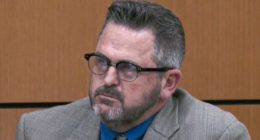
Every new summer TV series has to fight to get attention. The Jan. 6 hearings had more challenges than most.
There was public exhaustion and media jadedness over a story that’s been in the news for a year and a half. There was the MAGA echo chamber that has primed a huge chunk of America to reject, sight unseen, any accusation against former President Donald J. Trump.
Above all, the hearings, which aired a capstone prime-time session on Thursday night — a midseason finale, if you will — had to compete with our expectations of what constitutes a “successful” TV hearing. Not every congressional inquest can be the Army-McCarthy hearings, in which the lawyer Joseph Welch asked the Red Scare-monger Senator Joseph McCarthy, “Have you no sense of decency, sir, at long last?”
These hearings, in an era of social-media cacophony, cable-news argument and fixed political camps, were never likely to build to a cinematic climax that would unite the public in outrage. Yet by the standards of today, they have achieved some remarkable things.
They drew an audience for public-affairs TV in the dead of summer. They reportedly prompted further witnesses to come forward. Polling suggests they even moved opinion on Mr. Trump and Jan. 6 among Republicans and independents. They created riveting — and dare I say, watchable — water cooler TV that legitimately mattered.
And make no mistake: The hearings, produced by James Goldston, the former president of ABC News, succeeded not just through good intentions but also by being well-made, well-promoted TV. They may have been a most unusual eight-episode summer series (with more promised in September). But they had elements in common with any good drama.
Visual storytelling
When you think of congressional hearings, you think talk, talk, talk. Hours of witnesses leaning into microphones. Countless round-robins of representatives grandstanding. The Jan. 6 hearings, on the other hand, recognized that TV is a visual medium, and that images — like the footage of the assault on the Capitol — can say more than speechifying.
The editing and graphics were more the stuff of a high-gloss streaming documentary than anything we’re used to seeing from the U.S. Congress. Diagrams of the Capitol showed how close we came to catastrophe, metaphorically and physically. Using mostly interview snippets, deftly cut together, the July 12 hearing brought to life a White House meeting in which Trump loyalists floated “unhinged” gambits for seizing the election apparatus — the oral history of a cabal.
Thursday, in a meta device befitting a president who was made and swayed by TV, the committee showed onscreen what the president saw in real time in the over two and a half hours he spent watching Fox News and letting the violence play out. A graphic dropped us into the executive dining room, from the point of view of the president in his customary spot facing the tube.
Key Revelations From the Jan. 6 Hearings
Later, we saw outtakes of a sullen Mr. Trump the day after the attack, shooting a cleanup video meant to deplore the violence. He rejected the line “The election is over,” stumbled over words, smacked the lectern in frustration. For decades, Mr. Trump thrived through media appearances and flattering editing on “The Apprentice.” Now the TV president was exposed by his own blooper reel.
High stakes
Every TV series needs to tell viewers why they should care. The Jan. 6 committee had a ready answer: Americans should care about our free, democratic elections. And they should care when the losing party tries to toss out the outcome in an extra-constitutional bonus round.
But the hearings also repeatedly made clear that this was not about an abstract principle or a bad thing that happened in the past. This was an active threat. The conservative legal scholar J. Michael Luttig warned in a June hearing that Mr. Trump or a like-minded successor could “attempt to overturn the 2024 election in the same way.”
And the vice chairwoman, Liz Cheney, Republican of Wyoming, used her remarks to underscore the immediacy. When she reported at end of the July 12 hearing that Mr. Trump had recently tried to contact a potential witness, her remarks were a warning to the former president, but they also had the feel of a cliffhanger: The target was still at large and still at work.
Beginning the first hearing with footage of the mayhem at the Capitol was an unusual choice by congressional standards. But it was familiar to anyone who watches TV mini-series — the in medias res opening, dropping you at the scene of the crime and then doubling back to trace, step by step, episode by episode, the actions that brought us to this pass.
Each hearing, like the installments of a streaming thriller, focused on a discrete aspect of the attack on the election — the pressure on state governments, the incitement of the mob, the involvement of right-wing hate groups — each building on the last and drawing connections. Thursday night, the narrative came full circle, returning us to the climactic day, this time from the heart of the White House.
Like the graphics, the hearings’ structure gave viewers a map, making sure they knew where they were, where they’d been and where they were going.
The committee interviewed hundreds of witnesses. It put only a carefully chosen few on live TV.
What you didn’t see, by and large, were political adversaries of the former president. We heard from Republicans and staffers who agreed with Mr. Trump politically but rejected his attempted power grab, and from sympathetic outsiders like election workers and police officers. Not to mention Cassidy Hutchinson, a former aide to the former White House chief of staff Mark Meadows; political thrillers love a surprise witness.
Around them, the committee assembled a supporting cast of figures, recorded on video or audio, and let their voices tell the story. Mr. Trump’s attorney general, William P. Barr, saltily dismissed his ex-boss’s conspiracy claims. Richard P. Donoghue, who had been acting deputy attorney general, colorfully recalled shutting down the environmental lawyer Jeffrey Clark, whom Mr. Trump considered naming as a loyalist attorney general: “How about you go back to your office, and we’ll call you when there’s an oil spill.”
As in a drama like “Succession,” this created a universe of recurring characters — allies, antiheroes, antagonists — and situated viewers within a network of relationships and emotions. And just like with “Succession,” you didn’t have to admire everyone onscreen to be captivated.
A strong lead
But even a big ensemble needs focal characters. The chairman, Representative Bennie Thompson, Democrat of Mississippi, opened and closed the sessions with heavy-hearted urgency. But it was Ms. Cheney who became the voice and face of the panel.
Ms. Cheney has a serious tone and a just-the-facts affect but also a sharp sense of how to use the spotlight and hook an audience. She served as narrator, offering up quotable drive-by taunts (she described Mr. Trump taking advice from “an apparently inebriated Rudy Giuliani”) and teasing coming attractions as if defying viewers to touch that dial. She could be dryly devastating, saying, “President Trump is a 76-year-old man. He is not an impressionable child.”
For taking on Mr. Trump, Ms. Cheney has risked her chances of winning a Republican primary for re-election. This summer, she played her part like someone who believed she might get only one season.
Creative control
The hearings created a kind of self-contained alternate universe, in which members of both parties agreed that Joseph R. Biden won the 2020 election and that Mr. Trump was wrong to try to overturn it. But this was possible partly because the Republican leadership, having first tried to put Trump ride-or-dies on the committee, declined to name any members.
This freed the committee and Mr. Goldston to do a rare thing in a modern Congressional hearing: create a unitary narrative with a sustained argument, without one wing of the committee trying to kick up dust and derail the effort. Future committees may try to imitate this broadcast, but their detractors may not give them the same opportunity. This may be one more TV success that proves difficult to imitate.
Dramatic flair
Mr. Goldston and the committee knew they had a thriller on their hands — conspiracy, backbiting, violence, even dark comedy — and they let it play like one onscreen.
This meant balancing a serious argument — that Jan. 6 was the culmination of an effort to seize power, first through political maneuvering, then through muscle — with the kinds of colorful moments and details that get people buzzing. People care about ideas and principles. But they connect to character, to incident, to vivid images.
So along with the story of a president goading an armed mob to march on the Capitol, we got the mental image, from Ms. Hutchinson’s testimony, of “ketchup dripping down the wall” in the White House after Mr. Trump threw a plate in rage. Along with Thursday’s horrifying video and audio of Secret Service agents fearing for their lives, we got the diptych of Senator Josh Hawley, Republican of Missouri, first saluting the mob with a raised fist, then fleeing the assault, helpfully spotlighted on surveillance footage.
The hearings gave us both the tragedy of Jan. 6 and the absurdity, the terror and the irony, the blood and the ketchup.
Word of mouth
The strongest story in the world means nothing if no one is paying attention. The hearings were made — and, unusually for a congressional broadcast, promoted — with a keen instinct for how audiences today become interested in TV and how they talk about it.
The committee and its members posted teaser video clips on social media to spike interest. They offered recaps and previews, like the “Previously” and “Next week on” trailers that bracket prime-time dramas. They promised video that was “never before seen,” three magic words to excite media interest.
And the proceedings were stacked with clips and anecdotes perfect for late-show monologues and social media sharing, which generate a secondary audience and free advertising. Within minutes of the Hawley clips’ airing, social accounts screen-grabbed them for jokes and scored them to “Yakety Sax” and the “Chariots of Fire” theme. (The images aired just before a break, as if, as the pop-culture critic Linda Holmes noted on Twitter, to give the internet time to go to work.)
To paraphrase Carl von Clausewitz, it was the continuation of politics by other memes.
Trust in the audience
Ultimately, the hearings had the same job as that of any ambitious TV drama: to make a complex story coherent. But they also needed to tell a complete story in detail — Thursday’s broadcast, like many a season finale, ran longer than usual — and have faith that, given signposts and a strong voice, viewers would stick it out.
There were plenty of reasons these hearings might flop. Everybody knows that summer TV audiences want “Stranger Things” escapism, not sobering reality. Hearings rarely make a dent in public opinion anymore. People are jaded, exhausted, disillusioned, resigned.
And yet plenty of them watched. If the hearings end up accomplishing more than expected, it may be because they have expected more of their audience. However many reasons there are to be cynical, the committee took its shot, told its story and trusted that we still had decency, at long last.
Source: | This article originally belongs to Nytimes.com









